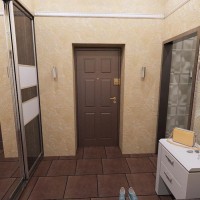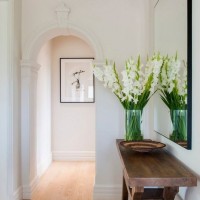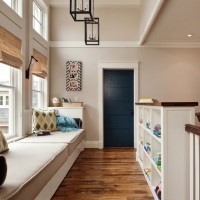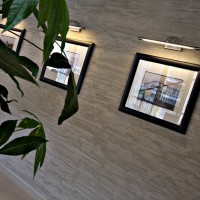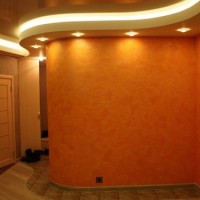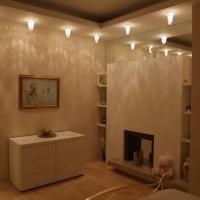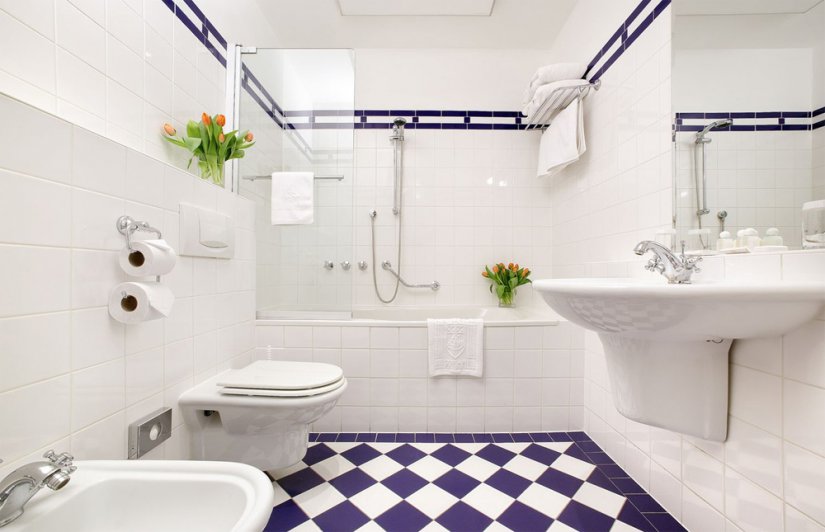Textured plaster in the interior of the halls: photos of the best options
The entrance hall is the first thing that an incoming person, a guest or the owner of the house sees. Its design and accuracy form an impression. Finishing materials for decorating walls in the hallway, in addition to aesthetic qualities, must also meet the requirements of practicality. Therefore, decorative plaster is so often used to decorate walls in corridors and halls.

Finishing materials for decorating walls in the hallway, in addition to aesthetic qualities, must also meet the requirements of practicality
Content
- 1 Why decorative plaster is more preferable in the hallway than wallpaper or other types of decoration?
- 2 Textured plaster and its varieties
- 3 Textured plaster: benefits
- 4 Technology for wall decoration with textured plaster
- 5 Some popular views
- 6 Do-it-yourself decorative plastering of walls with putty
- 7 Textured plaster in the interior 46 photos:
Why decorative plaster is more preferable in the hallway than wallpaper or other types of decoration?

17
In the halls and corridors, especially narrow ones, the wall covering is quickly worn away. The hallway stores outerwear, umbrellas, shoes, etc. On all this, dirt, dust and sand are brought into the house. Therefore, frequent wet cleaning is required in the corridor.
The walls in the hallway should be:
- Not easily soiled. It is worth abandoning pastel, too light, bright colors.
- Resistant to mechanical abrasion.
- Washable, and perfectly tolerating detergents.
- Made in the same style with the rest of the rooms of the dwelling.

16
Decorative textured plaster is best able to satisfy all these wishes. There are a large number of types of this plaster and its application technologies, colors, style decisions, which fit the plastered surface.
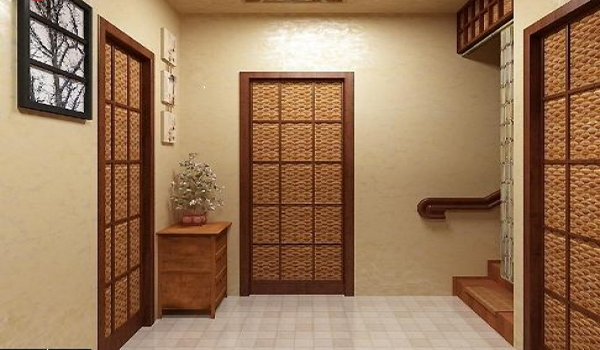
There are a large number of types of this plaster and its application technologies, colors, style decisions, which fit the plastered surface.
Textured plaster and its varieties
This material differs from other types of plaster in that small pebbles, organic fibers (linen, cotton, wood), brick and stone chips, ground mica and silica sand and other similar additives are added as a filler to the plaster dough. They create a textured embossed surface of the wall, give it interesting shades and overflows of colors. There is textured plaster with the effects of sandy wind, velvet, with an imitation of a cut of wood and stone, and many other texture options.

15
The huge advantage of textured plaster, especially appreciated by home craftsmen, is that it ideally masks even deep bumps in the walls. The basis for textured plaster can serve as gypsum board, and a specially treated and primed wall.

There is a textured plaster with the effects of sand wind, velvet, with an imitation of a cut of wood and stone, and many other texture options
Textured plaster: benefits
- simple care: during operation, this textured material is easy to wash and clean in a dry way;
- moisture resistance;
- mechanical abrasion resistance;

14
- gives the walls of the entrance hall additional heat and sound insulating properties;
- does not gas, does not emit any toxins, consists of natural mineral or organic components;
- in terms of fire hazard refers to low-combustible building materials.
Binders
The quality of the textured plaster and its appearance on the wall are affected not only by the filler, but also by the binder used. How binders are used:

13
- Cement mixture. Mineral plasters are diluted with dry powder water. Neither vapor permeable and fire resistant. It is better to use them for decorating walls made of mineral materials.
- Acrylic Blends (produced from acrylic resin). This type of plaster does not need any additional preparation. It is sold ready-made, pre-painted, dries quickly and stays on the wall for a long time in its original form.

13
- Silicate mixtures (from liquid glass). This type of binder is also sold as a ready-to-use formulation. Silicate plaster perfectly fits on any foundation, including old silicate brick. Cons of this type - is expensive and has a limited number of color schemes.
- Silicone. This is the best high-tech type of plaster coatings. Silicone plasters are suitable for old surfaces made of silicate materials. They “breathe” (have vapor permeability), have dirt-repellent properties and are very durable.

12
It is important to use the type of plaster according to the characteristics and material of the wall. Wrong selection of the binder composition leads to the formation of blisters, cracks, delaminations on the finished surface. For example, when plastering porous and vapor-permeable aerated concrete, it is necessary to apply a composition with also high vapor permeability.

It is important to use the type of plaster according to the characteristics and material of the wall.
Technology for wall decoration with textured plaster
Surface treatment and subsequent application of textured plaster is not an easy task. Preparatory work includes steps such as leveling, puttying and priming the surface. The importance of a good primer should not be underestimated. It is required to apply successively several layers of soil and wait for their final drying. After the plaster composition is applied first with a spatula, and then decorated with a stencil, textured roller or spatula. Some types are applied by spraying with a special device.
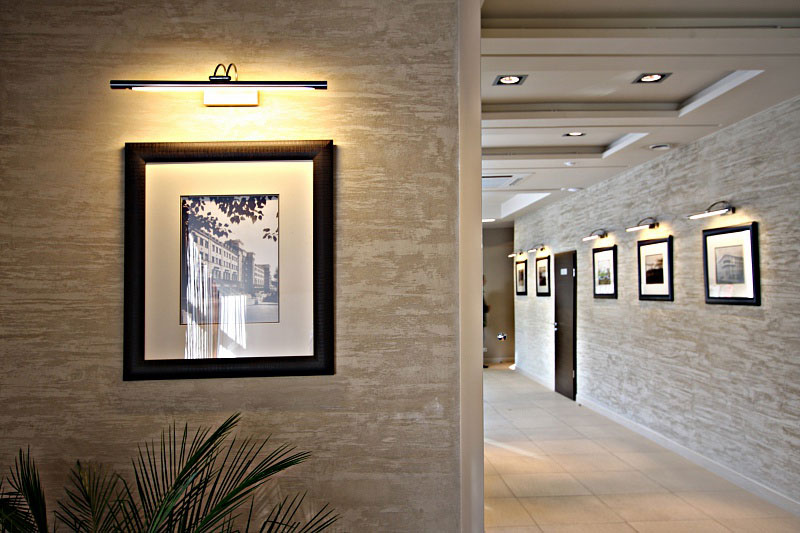
11
Tip: Often use the most unexpected objects to create textures. A crumpled plastic bag, a broom handle, a shoe brush - anything can come in handy.
The relief is formed with the help of improvised tools and the imagination of the master. Sometimes, applying several layers in succession is required. It is important to finish the formation of the relief within half an hour or 40 minutes so that the plaster composition does not harden. After all the layers of textured plaster have completely dried, the surface is adjusted with a grater and painted. There are finishing products that give the plastered wall shine or dullness.

10
Types of Invoices
Arches, niches, doorways and slopes, which are numerous in the hallways, are an excellent field for plastering using various textures. Scale finish and bark beetle stucco can coexist perfectly in one space.

Arches, niches, doorways and slopes, which are numerous in the hallways, are an excellent field for plastering using various textures
Usual hair rollerif they are drawn on the newly applied plaster, gives the original drawing. This relief, if desired, can be smoothed slightly on top with a spatula. You can buy rollers with a pattern, ornament. The difficulty of their use is that it is necessary to carry out a roller in one passage from above to the bottom of the wall or the entire wall in width. But the use of some rollers gives the best result if you apply strokes in different directions. With a certain skill, you can apply the plaster directly with a roller. In this case, the consumption of the composition is minimal.

9
Stamps - This is another convenient tool with which a person without special skills can apply textured plaster in the hallway.The stamp is pressed against the wall, imprinting a drawing on it. When working, you often need to moisten the stamp with water and clean it of adhering plaster composition.

8
Invoice Application trowel, trowel or brush - This is the aerobatics of plastering. In this case, the master literally draws on the wall, as on a canvas. The simplest application option is a “wild stone." To achieve this texture you need to apply strokes with a spatula at random. This will give the surface the look of raw natural stone. It is also possible to use a trowel with teeth, a hard sponge, a brush, etc. in a variety of ways. To obtain an original and new surface you need not a special tool, but imagination and courage.

7
Tip: Before applying the plaster, perform a test application of a small amount of the composition on a limited surface of the wall. Test plastering will help you figure out how the plaster is suitable, feel it in work.

Drawing the invoice with the pallet, trowel or a brush is the aerobatics of plastering
Some techniques and subtleties of using textured plaster in the hallway
- To visually make the ceiling higher, apply vertical strokes or use a vertical ornament. To make the hallway wider, apply strokes horizontally.

1
- Textured plaster in the hallway necessarily requires treatment with a protective compound. High-quality compounds retain color from tarnishing, give shine or a matte tone, protect from abrasion.

6
Some popular views
- Bark beetle. This is a plaster, in which solid polymer particles are introduced, which, when stretched with a spatula, create characteristic grooves.
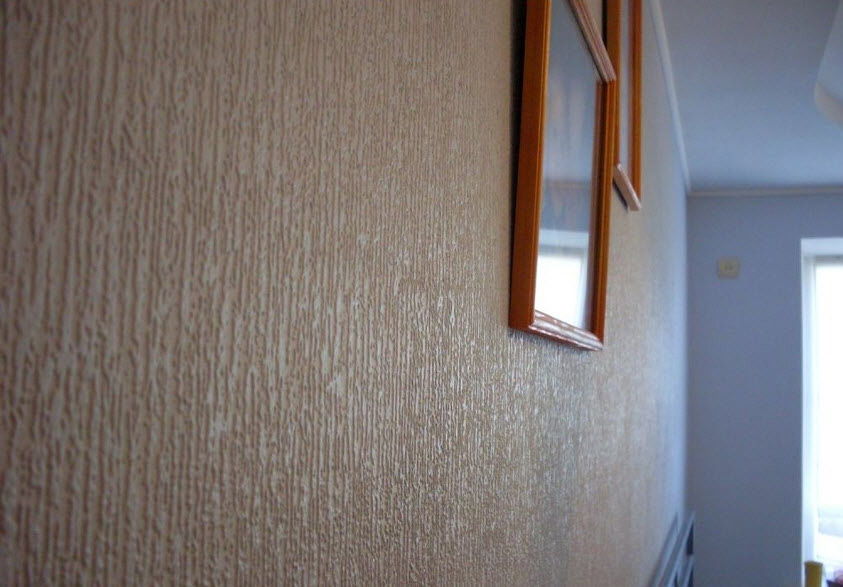
2
Tip: You can perform the simplest application by creating longitudinal or transverse furrows up and down. And you can wipe the plaster in a circular motion. Then the pattern will turn out in the form of spirals. It is important to apply the drawing with uniform pressure and the same scope.
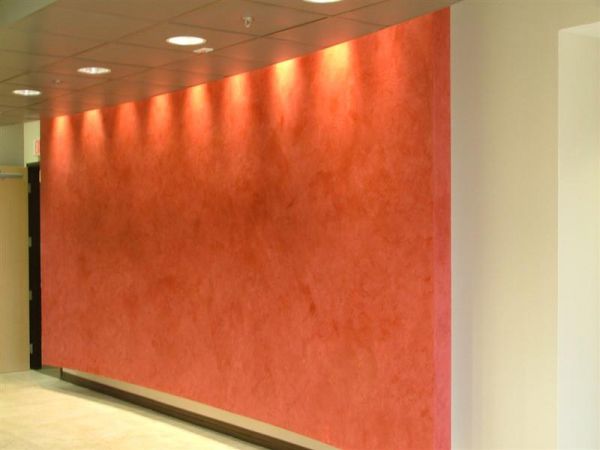
Textured plaster in the hallway necessarily requires treatment with a protective compound
- Venetian plaster. This is an exquisite finish that is characterized by transparency and depth. The composition of the Venetian includes slaked lime, water emulsion, crushed marble to the state of flour. In finished form, Venetian plaster is a dense transparent mass. And when applied, it creates a marble effect on the wall. You can enchant this type of coating in any color. But the surface closest to marble is obtained by using two or three natural shades of the same color. The Venetian is applied with fine strokes with a triangular spatula. To achieve the correct appearance, apply at least 4 thin layers.

5
Tip: The best protection for Venetian plaster is beeswax.
- Antiqued. This type of plaster contains latex. It, together with a special application technique, gives the effect of scuffing, light cracking and roughness. This coating looks noble. When dried, a special layer is formed on the latex plaster, which gives abrasion resistance.

4
- Mineral plaster contains marble granulate and other mineral aggregates. This is an economical plaster that looks great thanks to marble chips, has excellent heat-insulating properties and is economically consumed.

3
- Stucco Graphite - This is one of the most unusual types of plasters. The master with her help is able to recreate even the masonry of the wall. Graphite is applied to any building materials, including glass, chipboard, foam concrete, drywall.
Do-it-yourself decorative plastering of walls with putty



